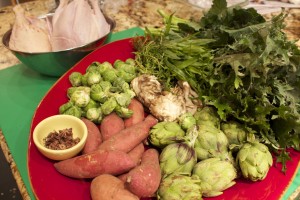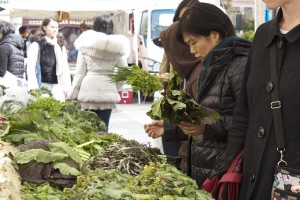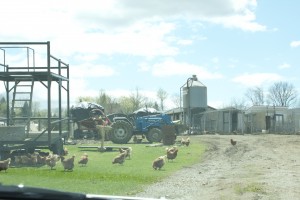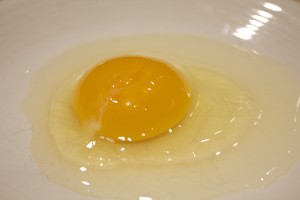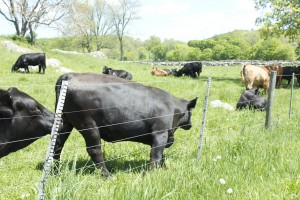
|
Eating for Radiant Skin: Part 1 I recently gave a lecture to some folks at Beauty Bank, a division of Estée Lauder, on eating for healthy skin. We then cooked a delicious luncheon that was rich in anti-oxidants and phytochemicals. Preparing the lecture got me thinking a lot about free radical damage and what contributes to good skin from the inside out. There’s so much to say about this, that I’ve divided it into three parts. Part one is simply the basics of a good diet. While individual components may vary, there are some general principles that are applicable to all. The Quality of Food Counts Eat whole foods rather than refined. Whole foods are the edible parts of foods that are as close to their natural state as possible. Here’s a visual on whole foods: Whole foods should be prepared in a way that retains enough nutritional value to be supportive of health. Beans and grains, for instance, should be soaked overnight (with juice of 1/2 lemon) to improve digestibility. Nuts should be soaked if possible. Whole foods can be puréed into a soup – it’s still whole – but a juice, although nutritious in some ways, is not a whole food. (More about this in part two.) Refined foods have been processed so that most of the nutrients have been stripped away. They are nutrient thieves; they rob your body of stored nutrients in order to make the energy it takes to digest them. Refined sugar is a prime example of this. Eat Real Food, Not Fake Heres’s an example: soy sauce, called shoyu (traditionally processed soy sauce) should just have in it soy, wheat, water and salt. It takes six months for it to ferment naturally and it’s a healthful condiment. The fake varieties have caramel coloring, all kinds of additives, and have been processed overnight. They are a bottle of flavored chemicals. That’s a fake food. Most real food has a short shelf life (there are, of course notable exceptions such as vinegars, sea vegetables, and other condiments.) Food is best fresh and harvested when ripe. If possible, go to grocery stores that buy local food, or better yet, frequent a farmers market to purchase seasonal food, which happens to be in harmony with nature. Seasonal food is the freshest, most cost effective, most organic, and most flavorful. Seasonal food helps your body adapt to changes in temperature. In winter it’s time for soups and stews, grains, and root vegetables. Spring has strawberries, asparagus, and leafy greens. These help clear waste that has accumulated over winter. Summer has a large variety of wet food, juicy fruits, lettuces, and summer squash that help our bodies stay hydrated and cope with hot weather. Buy organic when possible. Organic soil is replaced by a full spectrum of nutrients. The soil in conventional farming only has nitrogen, phosphate, and potassium. This leaves me wondering what happened to the other sixty nutrients we aren’t getting. I do think local is most important when it comes to vegetables and fruits. While shopping at a green market, you have the opportunity to ask the farmer about his farming practices. He may not be certified organic, but he may be in practice, or he may spray only minimally, and he probably replenishes his soil. A good website is foodnews.org, which lists the dirty dozen produce that is most heavily sprayed as well as the cleanest fifteen fruits and vegetables that are the least sprayed. It’s important to note that GMO foods (conventional soy, corn – not the sweet corn-on-the-cob variety, and wheat) are engineered to withstand huge amounts of pesticides. So when you eat GMO foods, you are getting a pesticide load. The Most Important Foods to be High Quality: All animal foods fall into this category. Eggs, for instance provide 8 essential amino acids and they are nature’s perfect food (of course, if you’re allergic, it’s not YOUR perfect food. ) The yolk is the most nutritious part of the egg; the nutrient list reads like a multivitamin, so please, no egg white omelets! The best nutrient dense eggs are from pastured chickens, those that have been running around pecking in the ground along with their supplemental diet of feed. The best beef, chicken, lamb and dairy are from pastured animals that have been roaming around eating pasture. They should not be finished in feed lots. Grass fed really means grass finished. All animals start out on grass but a healthy animal finishes its life on grass as well. The nutrient profile in an animal that has been finished on grass is completely superior to those which have been feedlot and grain finished. Fish should come from sustainable fisheries. Salt should have a good mineral content. Unrefined sea salt has 80 trace minerals in a form easily absorbed by the today. Use the right amount of good salt to make your foods burst with flavor and avoid processed food. Share on Facebook and Twitter | Health Tips | No comments
Leave a Reply
|
